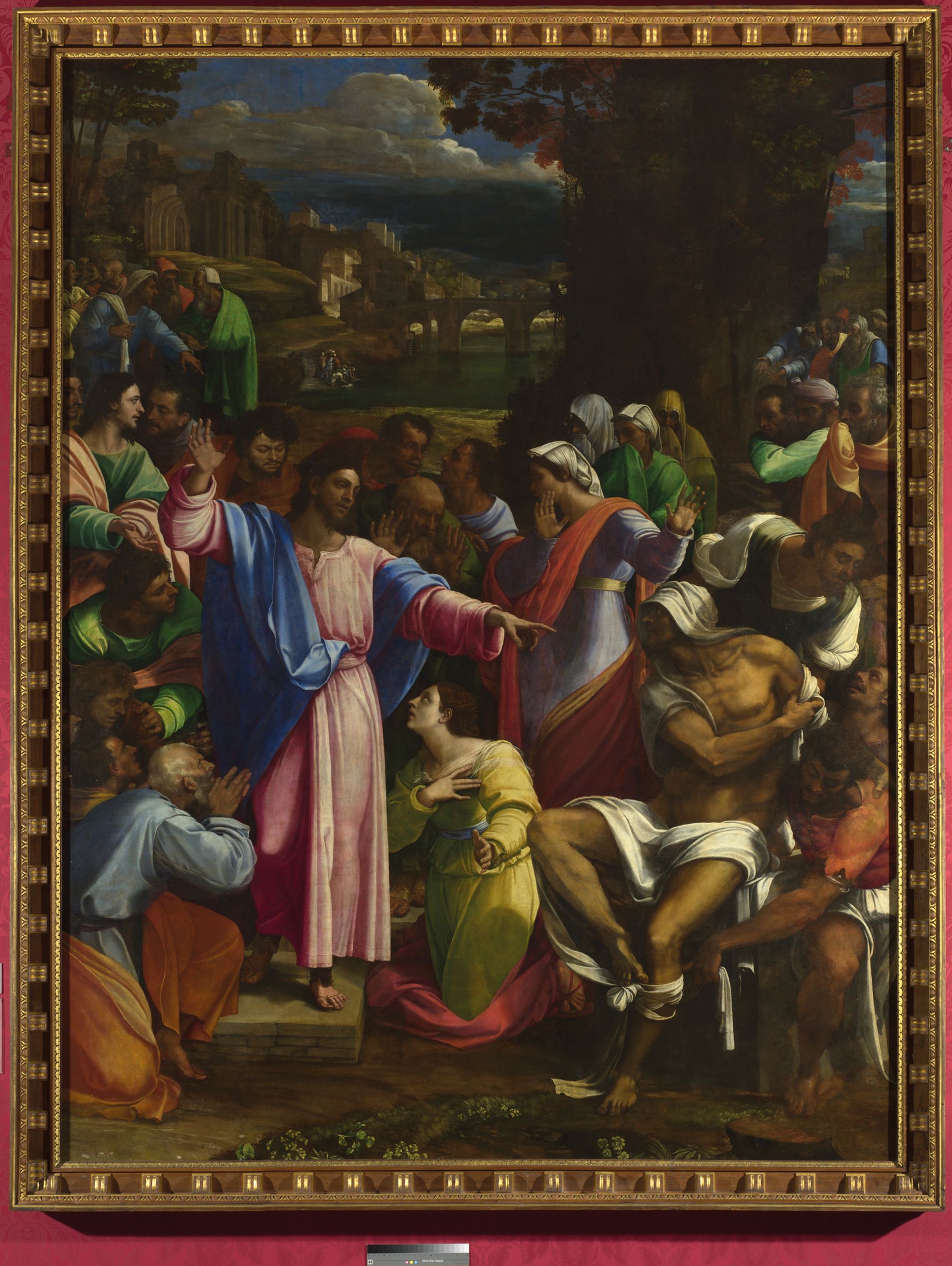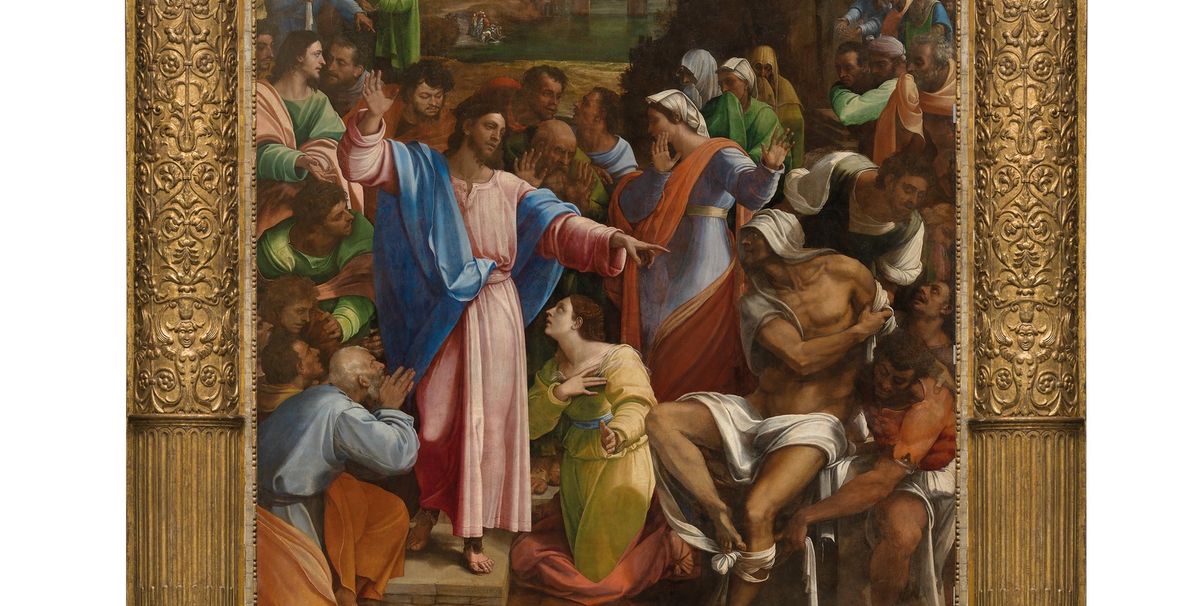The National Gallery has created a new frame for Sebastiano del Piombo’s The Raising of Lazarus (1517-19) altarpiece, which was unveiled in its new Michelangelo & Sebastiano exhibition (until 25 June). The new composite frame, which contains a mix of carefully sourced antique pieces as well as newly made replicas based on 16th-century architectural elements, is much closer stylistically to the original frame and gives the large-scale painting even greater visual impact.
The original frame was probably designed by Sebastiano’s mentor, Michelangelo, according to new research by the gallery’s curator of 16th-century Italian paintings, Matthias Wivel. Sebastiano then supervised the carving and gilding, which was done in Rome.

The frame was considered lost, but the original predella (lower part) has been identified in Narbonne Cathedral, in southern France. The three feathers of the Medici family’s arms can be seen above the two festoons. Although the altarpiece was commissioned for the cathedral, it was sold off in 1722 and replaced by a copy. It was only in the 1980s that scholars realised that the predella (but not the rest of the frame) was original.
The British businessman John Julius Angerstein (1732-1823) bought the painting in 1798 and sold it as part of his collection to establish the National Gallery in 1824. It was the first work to be inventoried and given the number NG1. The picture later deteriorated badly, mainly because it had been transferred from panel to canvas in the 1770s. It was put back on display in a new frame in 1969 after a 16-year conservation project. This has now been replaced for the current exhibition.
Peter Schade, the gallery’s head of framing, went to Narbonne to photograph and measure the original predella, which he has now replicated in London, using Italian poplar wood (as in the original). He endeavoured to make the replica appear as if it is not a brand-new piece, but one that has weathered 500 years.

The form of the predella suggests that the rest of the frame was designed as an architectural ensemble. For the entablature (top), Schade used a 16th-century architectural molding, which he bought at auction in Italy. It was not long enough for the painting, which is nearly three metres wide, so he extended it in the middle by three festoons, again using poplar for this addition. For the sides, Schade created two half-columns, loosely based on original 16th-century Italian columns. The new ensemble provides a reasonable approximation to the original Michelangelo-designed frame, although the sides and top are imagined.
Schade believes that the new frame gives Sebastiano’s painting a real sense of depth: “The perspective recedes more, so you have an impression of space in the landscape. The large figures are now much better contained within the composition.”
The altarpiece in its new frame is now more than five metres tall. The challenge will be to find the right space to display it in the gallery’s permanent collection after the exhibition closes.
• Michelangelo & Sebastiano, National Gallery, London, until 25 June


